#great nicobar
Text
Genocide experts warn that India is about to genocide the Shompen people
Who are the Shompen?
The Shompen are an indigenous culture that lives in the Great Nicobar Island, which is nowadays owned by India. The Shompen and their ancestors are believed to have been living in this island for around 10,000 years. Like other tribes in the nearby islands, the Shompen are isolated from the rest of the world, as they chose to be left alone, with the exception of a few members who occasionally take part in exchanges with foreigners and go on quarantine before returning to their tribe. There are between 100 and 400 Shompen people, who are hunter-gatherers and nomadic agricultors and rely on their island's rainforest for survival.

Why is there risk of genocide?
India has announced a huge construction mega-project that will completely change the Great Nicobar Island to turn it into "the Hong Kong of India".
Nowadays, the island has 8,500 inhabitants, and over 95% of its surface is made up of national parks, protected forests and tribal reserve areas. Much of the island is covered by the Great Nicobar Biosphere Reserve, described by UNESCO as covering “unique and threatened tropical evergreen forest ecosystems. It is home to very rich ecosystems, including 650 species of angiosperms, ferns, gymnosperms, and bryophytes, among others. In terms of fauna, there are over 1800 species, some of which are endemic to this area. It has one of the best-preserved tropical rain forests in the world.”
The Indian project aims to destroy this natural environment to create an international shipping terminal with the capacity to handle 14.2 million TEUs (unit of cargo capacity), an international airport that will handle a peak hour traffic of 4,000 passengers and that will be used as a joint civilian-military airport under the control of the Indian Navy, a gas and solar power plant, a military base, an industrial park, and townships aimed at bringing in tourism, including commercial, industrial and residential zones as well as other tourism-related activities.
This project means the destruction of the island's pristine rainforests, as it involves cutting down over 852,000 trees and endangers the local fauna such as leatherback turtles, saltwater crocodiles, Nicobar crab-eating macaque and migratory birds. The erosion resulting from deforestation will be huge in this highly-seismic area. Experts also warn about the effects that this project will have on local flora and fauna as a result of pollution from the terminal project, coastal surface runoff, ballasts from ships, physical collisions with ships, coastal construction, oil spills, etc.
The indigenous people are not only affected because their environment and food source will be destroyed. On top of this, the demographic change will be a catastrophe for them. After the creation of this project, the Great Nicobar Island -which now has 8,500 inhabitants- will receive a population of 650,000 settlers. Remember that the Shompen and Nicobarese people who live on this island are isolated, which means they do not have an immune system that can resist outsider illnesses. Academics believe they could die of disease if they come in contact with outsiders (think of the arrival of Europeans to the Americas after Christopher Columbus and the way that common European illnesses were lethal for indigenous Americans with no immunization against them).
And on top of all of this, the project might destroy the environment and the indigenous people just to turn out to be useless and sooner or later be abandoned. The naturalist Uday Mondal explains that “after all the destruction, the financial viability of the project remains questionable as all the construction material will have to be shipped to this remote island and it will have to compete with already well-established ports.” However, this project is important to India because they want to use the island as a military and commercial post to stop China's expansion in the region, since the Nicobar islands are located on one of the world's busiest sea routes.
Last year, 70 former government officials and ambassadors wrote to the Indian president saying the project would “virtually destroy the unique ecology of this island and the habitat of vulnerable tribal groups”. India's response has been to say that the indigenous tribes will be relocated "if needed", but that doesn't solve the problem. As a spokesperson for human rights group Survival International said: “The Shompen are nomadic and have clearly defined territories. Four of their semi-permanent settlements are set to be directly devastated by the project, along with their southern hunting and foraging territories. The Shompen will undoubtedly try to move away from the area destroyed, but there will be little space for them to go. To avoid a genocide, this deadly mega-project must be scrapped.”
On 7 February 2024, 39 scholars from 13 countries published an open letter to the Indian president warning that “If the project goes ahead, even in a limited form, we believe it will be a death sentence for the Shompen, tantamount to the international crime of genocide.”
How to help
The NGO Survival International has launched this campaign:
From this site, you just need to add your name and email and you will send an email to India's Tribal Affairs Minister and to the companies currently vying to build the first stage of the project.
Share it with your friends and acquittances and on social media.
Sources:
India’s plan for untouched Nicobar isles will be ‘death sentence’ for isolated tribe, 7 Feb 2024. The Guardian.
‘It will destroy them’: Indian mega-development could cause ‘genocide’ and ‘ecocide’, says charity, 8 Feb 2024. Geographical.
Genocide experts call on India's government to scrap the Great Nicobar mega-project, Feb 2024. Survival International.
The container terminal that could sink the Great Nicobar Island, 20 July 2022. Mongabay.
[Maps] Environmental path cleared for Great Nicobar mega project, 10 Oct 2022. Mongabay.
#shompen#genocide#stop genocide#india#indigenous#indigenous peoples#indigenous rights#human rights#anthropology#stateless nations#end occupation#andaman and nicobar islands#nicobar islands#great nicobar#💬#asia#geopolitics#ecocide#sustainability
17K notes
·
View notes
Text
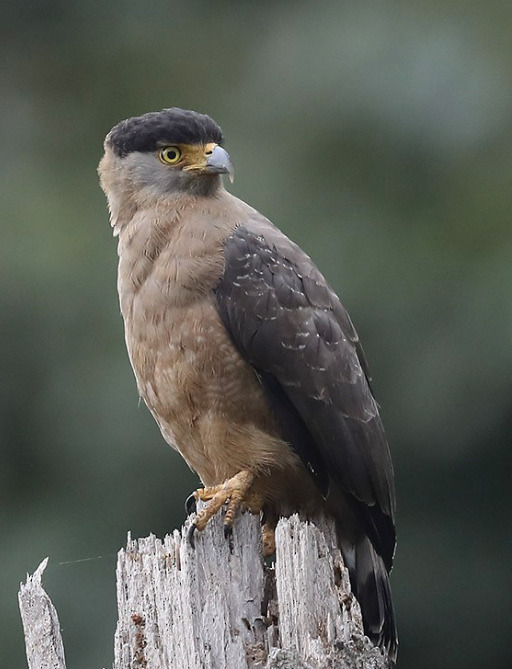

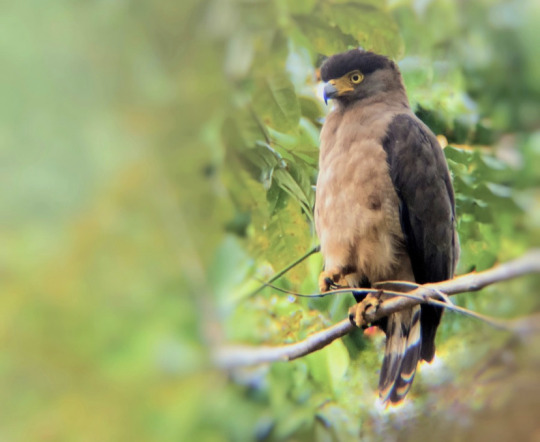

the great nicobar serpent-eagle is (believed to be) the world’s smallest eagle species; their name comes from being endemic to the indian island of great nicobar. as their name implies, snakes are a large part of their diet; they primarily feed on reptiles such as snakes and lizards. due to their small range, they are threatened by habitat loss. typically, only one egg is laid per clutch; if two eggs are laid, then only one will be successfully raised.
645 notes
·
View notes
Text

How dare you call me diminutive - I am Great!!
Great Nicobar Serpent Eagle (Spilornis klossi)
Great Nicobar Island, India
Status: Near Threatened
Threats: habitat loss
---
He's the world's smallest eagle at 16in / 35cm in height. Shh... but don't say that in front of him.
8 notes
·
View notes
Text
Animal of the Day!
Great Nicobar Serpent Eagle (Spilornis klossi)

(Photo by Niranjan Sant)
Conservation Status- Near Threatened
Habitat- Great Nicobar
Size (Weight/Length)- 450 g; 42 cm; 95 cm wingspan
Diet- Rodents; Small reptiles; Small birds
Cool Facts- Being the smallest eagle, the Great Nicobar serpent eagle certainly has a mouthful of a name. Despite their small, stocky body and short wings, the eagle’s head is far larger by comparison. Preferring to eat reptiles, the Great Nicobar serpent eagle flies low over grassland and jungle. Their extremely strong talons allow them to snag snakes from tree branches mid-flight, often being venomous varieties including several species of tree viper. Generally monogamous, some Great Nicobar serpent eagles use the same nest every breeding season.
Rating- 12/10 (Yum, yum. Snake time.)
Animtober- Eagle (Not the biggest, but pretty cool regardless.)
#Animal of the day#Animals#Birds#Eagle#Bird of prey#Tuesday#October 11#Great nicobar serpent eagle#biology#science#conservation#the more you know#Animtober#Inktober
62 notes
·
View notes
Text

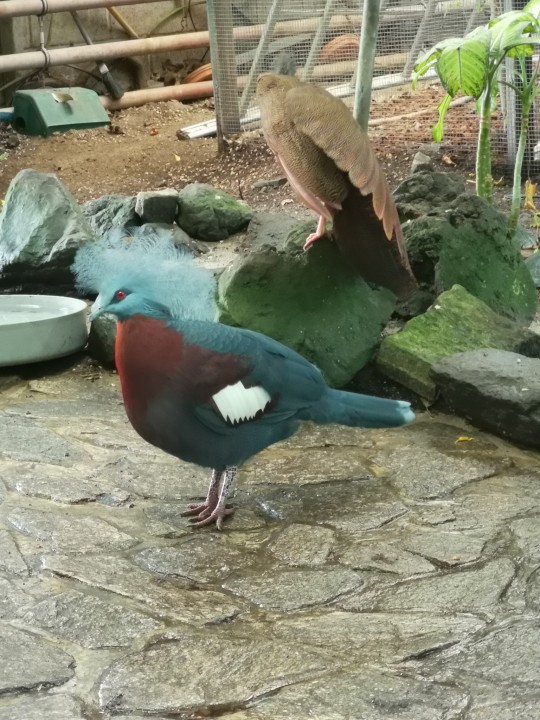
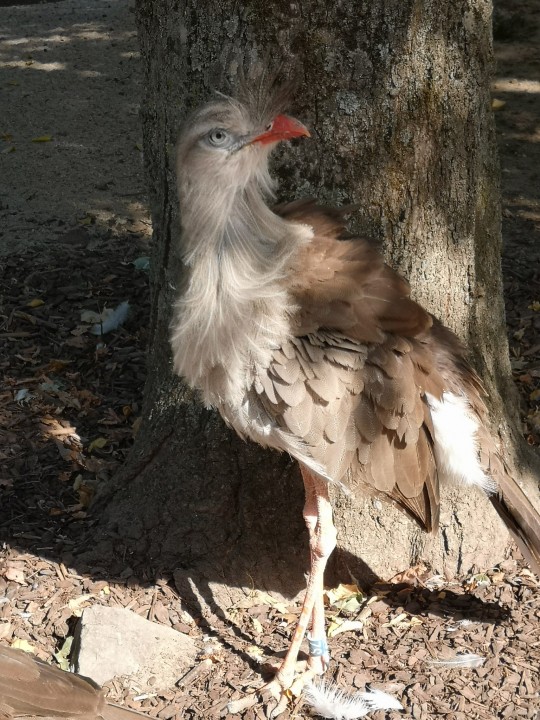
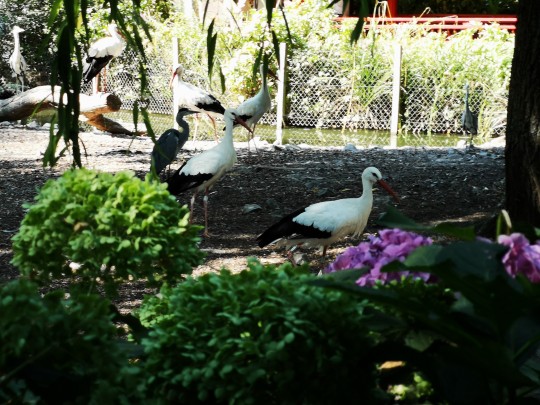
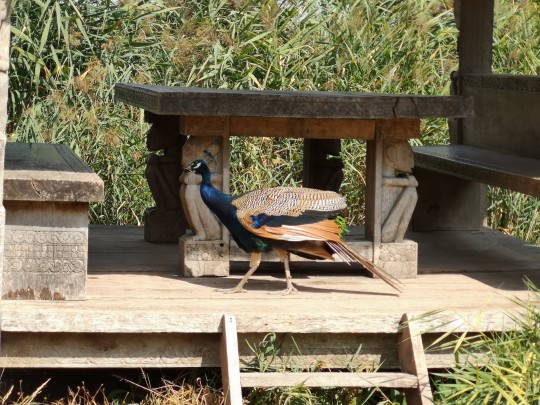
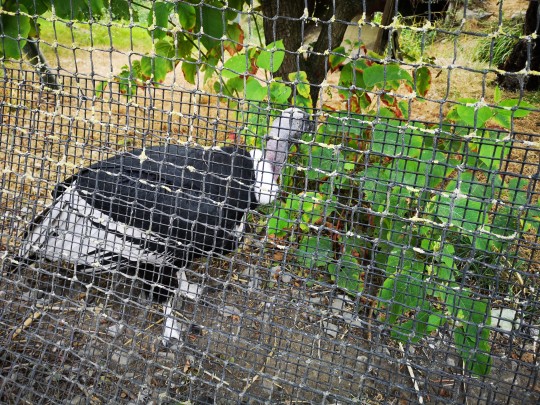


Some of the cool birds I saw at Pairi Daiza today.
#Nicobar pigeon#Western crowned pigeon#Seriema#White stork#Peacock#Andean condor#Bearded vulture#Pairi Daiza#There were so many more great birds#Just not up for a snapshot
38 notes
·
View notes
Text


Remember to read about the contestants before voting!
Dodo
The Dodo, is an extinct, fat little flightless bird from the island of Mauritius. Although it’s name is often used to call someone “dumb”, the dodo is actually quite smart! They are closely related to the Nicobar Pigeon, and were well adapted to an island that experienced a lot of hardships. Hardly a slow, dumb bird like we often think they were. Humans, who were the one of the factors to hunt them down to extinction, actually found dodos to not taste very good. But, they were large and could feed many people at once. Learn More!
Great Eared Nightjar
Often called a "little dragon", the Great Eared Nightjar is found in the forests of Southeast Asia. Not unlike the Tawny Frogmouth or Potoo, this fellow eats mainly bugs. However, they are often in motion when they are trying to catch their prey, which is a big difference from the Tawny Frogmouth and the Potoo. Learn More!
(Dodo illustration by Frederick William Frohawk)
(Great Eared Nightjar photo by Rajkumar Das)
125 notes
·
View notes
Note
okok here’s some of them (also don’t worry I am also sleep deprived.. sigh)
Feather sea star (literal ALIEN!! It actually makes me kind uncomfortable bc of how it moves but it’s still funky)
Strawberry squid (a squid but like. golden sequins)
Leafy sea dragon (this is their world. we just live in it)
Tree kangaroos (kangaroos But.. theire a lot fluffier and kind of like tiny bears)
Barreleye fish (this one has a clear forehead, so be warned it is very very alien (well it’s an ocean animal so not surprising /aff) but still cool)
Volcano Snails (their shells… are made.. out of IRON.)
Luzon Bleeding-Heart (well yeah. looks like it has a bleeding chest. very cool)
Marine Iguana (can be described as a baby Godzilla)
Pikachu Nudibranch (sea slug pikachu. god I love sea slugs)
Tasselled wobblegong shark (it looks like if an ocean floor had a face)
Indonesian Autumn Adder (real life dragon, if we’re all being honest)
Nicobar pigeon (closest living relative to the dodo birds!!!)
Curl-crested Aracari (toucan with clearly hair)
Shoebill Stork (I love them…)
Bearded vultures (they’re just really cool…)
White spotted jellyfish (OH MY YOD THEYRE LIKE ETHEREAL)
Skeleton panda sea squirt (bro is just a little guy.)
Leaf sheep sea slug (SEA SLUG, BUT IT GETS BETTER… ONLY ANIMAL THAT CAN USE PHOTOSYNTHESIS!!!)
Acorn Weevil (please theyre litteraly silly. best way to explain them)
White mystery weevil (yet again, silly. Weevils are just silly)
Sorry I didn’t put images i don’t have them all rn.. but if u ever want more….. I hav more
AHHH these are all great i love them all....especially the luzon bleeding heart like man that has a special little place for me.... deep love for birds and marine life for reals
i also love this kind of sea squirt

so silly looking
also if u would like more freaks of the water i offer the blue bottle jellyfish and the pelican eel, two strange little alien looking guys :JJJ
#asks :J#THANK YOU FOR THESE#I LOVE STRANGE AND UNUSUAL CREATURES!!!!!#the volcano snail is genuinely so freaking sick like actually thats so cool man
19 notes
·
View notes
Text
reading up a bit more on the plan that the indian gvmt has to build on (aka destroy the local flora and fauna of) the great nicobar island that has the potential to begin a genocide on the shompen people and endanger other indigenous peoples and it’s just so infuriating that we’re witnessing 3+ genocides right now and experts are warning about another. like i don’t have the words for how angering it is ESPECIALLY because the people in high places of power don’t fucking care to do anything about it. i’m hoping this plan won’t come to fruition but honestly i don’t have much or any faith in governments or organizations like the un to stop or prevent it anymore
#sorry to rant but i’m just so frustrated#people are so selfish and entitled and it always has to cost others#theo.txt
6 notes
·
View notes
Text
Top 5 Best Romantic Honeymoon Destinations In India |Destination Holiday tours
Honeymoon may be a newly introduced term for Indians but has worked wonders for several couples as it is not merely a trend anymore but has emerged as a significant milestone in the lives of the couples strengthening the bond of love, affection and understanding between each other.
Today, we have covered five best travel destinations for honeymoon couples where as couples you may live and breathe with your life partner in the most romantic manner surrounded by beauty and peace indescribable.
Manali
The first highly romantic and peaceful destination which offers picturesque view in every corner is Manali. These locations are Solang Valley and Rohtang Pass where you may challenge your adventurous self by getting involved in extreme sports. Moreover, the beautiful couples may also visit Jogini Waterfall, Beas Kund, Bhrigu Lake and Jana Falls.
Munnar
Well, if you plan to celebrate your Honeymoon in southern part of India, Munnar in Kerala may prove to be a great choice. This exquisite destination is located in the Land of Gods, Kerala and the splendid view of Munnar may rejuvenate the souls and may bring them together as one. The places that you may visit when in Munnar are Anamudi Peak, Eravikulam National Park, Mattupetty Dam, Tea Gardens, Kannan Devan Tea Museum, Attukal and Cheeyappara Waterfalls.
Darjeeling
Another incredible destination which becomes more beautiful when chosen for honeymoon is untouched region of Darjeeling. Mother Nature has formed an architecture of the location in carefree manner and it is quite evident with the unimaginable and scenic beauty.
Gulmarg
Honeymoon is time period when you as a couple wish to reach the paradise and nothing can be better if it is spent in real heaven. If you use the term, paradise, it is befitted for one destination i.e. Kashmir.
Neil Island
If you are inclined towards ocean and beaches as a couple, Neil Island in Andaman and Nicobar Islands is the perfect honeymoon place. The island will make you lose track of time and will send ripples in the hearts of the couple already much in love.
In a diverse and culturally rich country like India, where every corner tells a unique story, the quest for the best travel agent in India becomes an essential step in curating a memorable journey. So, whenever you get married, do consider any of the destinations described for your most special honeymoon and trust us you will thank us for it.
#best travel agent in india#best travel destinations in india#best travel agent in pcmc#best tour and travel agents in pcmc#tour and travel operator near me#destination holiday tours#Best Tour and Travel Agents in PCMC#Best Tours and Travel Company#best travel destinations in India#Top 10 travel companies in Pimpri chinchwad
6 notes
·
View notes
Text
Do you have 1 minute? Add your name, surname and email to send a pre-written email to India's Tribal Affairs Minister, other Indian government ministers, and the companies vying to build the project:
#shompen#great nicobar island#indigenous#india#genocide#stop genocide#andaman and nicobar islands#asia#human rights#💬#stateless nations#indigenous rights#land back
589 notes
·
View notes
Text
FINALLY, the mega bird post with the angels (and Crowley!) that I’ve been working on for like a week lmao

Crowley is a European Storm Petrel, (Hydrobates Pelagicus) which in folklore is referred to as Mother Carey’s Chickens. This comes from sailors who would see this bird right before storms and believe that they brought bad luck and cursed them with the storm, and Mother Carey comes from another folk tale where she is portrayed as a siren to lure sailors to sea. I thought Crowley’s demon-ness fit this quite well haha
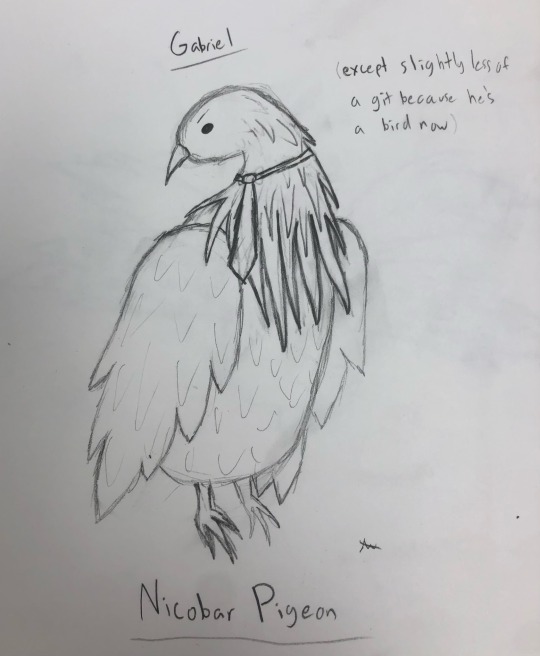
Gabriel is a Nicobar Pigeon (Caloenaes Nicobarica) which is the closest non-extinct relative of the Dodo bird. I saw an image of this bird in a book and immediately thought ‘oh hey it looks like a pompous jerk’ so BOOM Gabriel lmao

Sandalphon is an Egyptian Swift Pigeon (Columbia Livia?) because Sandalphon the angel in the Bible was a mess anger of God, and Egyptian Swift Pigeons used to be specifically bred to be carrier pigeons. Now they’re mainly bred for show :D

Uriel is a European Starling (Sturnus Vulgaris) which are relatively common in Great Britain and Ireland. They have gold speck-like markings all over their bodies so I thought it fit visually

Michael is a Kori Bustard (Ardeotis Kori) which is the largest flying bird in Africa. I chose this one because Michael the angel is a warrior and probably the strongest of the archangels and the Kori Bustard is carnivorous. And also very strong

Aziraphale is a dove :D
#ineffable birds#bird omens#bird facts#nature facts#?#probably#I am NOT qualified so please correct me on any of these!#and I need to color them as well but I left my colored pencils at home yesterday ToT#Kori Bustard#dove#European Storm Petrel#Egyptian Swift Pigeon#european starling#Nicobar Pigeon#good omens#art#my art#pencil#colored pencil#for some of them at least Lmao#birds#hyperfixations#because of course this is and it’s not going away at all lmao#I’ve been working on this post for too long#also yes I hate how Uriel’s necktie cravat thing turned out but WHATEVER
18 notes
·
View notes
Text
🦚Send in a number + Character and I'll draw them in an outfit based on that bird🦚
Allen's Hummingbird
African Crowned Crane
African Emerald Cuckoo
American Goldfinch
Anna's Hummingbird
Asian Emerald Cuckoo
Asian Koel
Atlantic Puffin
Azure Kingfisher
Bald Eagle
Barn Owl
Barn Swallow
Barred Owl
Bat Falcon
Bearded Vulture
Bee Hummingbird
Black Swan
Blue-And-Yellow Macaw
Blue Crowned Pigeon
Blue-Footed Booby
Blue Jay
Bohemian Waxwing
Brahma Chicken
Broad-Billed Hummingbird
Bronze Fallow Cockatie
Canadian Goose
Cassowary
Cardinal
Common Raven
Coua
Dusky Lory
Diederik Cuckoo
Eastern Brown Pelican
Egret
Emerald Starling
Emperor Penguin
Emu
Eurasian Hoopoe
Eurasian Magpie
European Starling
European Turtle Dove
Flamingo
Frigatebird
Fruit Dove
Galah
Gambel's Quail
Golden-Breasted Starling
Golden Pheasant
Gouldian Finch
Grandala
Great Hornbill
Great Horned Owl
Greater Blue-Eared Starling
Green-Legged Partridge
Gurney’s Pitta
Hawaiian Honeycreepers
Hoatzin
Hooded Crow
Horned Sungem
Hyacinth Macaw
Kadaknath
Kakapo
Keel-Billed Toucan
Lilac-Breasted Roller
Long Tailed Tit
Luzon Bleeding-Heart Dove
Mandarin Duck
Mountain Bluebird
Montezuma quail
Mute Swan
Nicobar Pigeon
Northern Oriole
Painted Bunting
Paradise Tanager
Peafowl (peacock/peahen)
Peregrine Falcon
Pileated Woodpecker
Pink Cockatoo
Rainbow Lorikeet
Red Crested Turaco
Red-Necked Tanager
Resplendent Quetzal
Ribbon-Tailed Astrapia
Ruby-Throated Hummingbird
Scarlet Macaw
Secretary Bird
Snowy Owl
Stork-Billed Kingfisher
Sulphur-Crested Cockatoo
Superb Bird-Of-Paradise
Superb Starling
Victoria Crowned Pigeon
Violetear
Violet-Backed Starling
Violet-Green Swallow
Wood Duck
Wilson's Bird-Of-Paradise
Yellow-Crowned Woodpecker
Yellow-Faced Myna
Zanzibar Red Bishop
6 notes
·
View notes
Audio
Burnt Friedman - Hexenschuss - new album of electronic polyrhythms, also available as extended versions
Hexenschuss (Extended Versions) by Burnt Friedman
The vocabulary of modern ‘Western’ music or of the so–called Global North has finally been spelled out. The ever more hasty striving to move forward led to a music that is ‘starving among this embarrassment of riches’. In those days, the music that was oscillating in a state of “permanent obsolescence” — often in short cycles of a few months — and preserved as a sign of the times in musical codes, has gone in the completely opposite direction, into a state of obsolete permanence.
In this drive forward towards refining and expanding a catalogue of superlatives, a never changing, underlying, but underdeveloped isometric schema has irreversibly and imperceptibly cemented in the body. The corresponding theory – the persisting phantom terms of academia – seek to break free of its phenomena. In contrast to this, in the music beyond the 'Global North', a nature of 'polyrhythms’ is detected, or, in other words, every beat that can not be grasped easily must therefor be a polyrhythm and African in essence.
Now, shift the focus away from the contrafactual cultural connotations of the record sleeve towards the animating principle of the music, the phenomenological vectors of rhythm and view ‘groove‘ as the intrinsic attribute of regular harmonic motion patterns. This formulaic, animating principle is solely based on the law of the octave (doubling and halving). It appears repetitive, or circular in nature as opposed to linear and progressive. Such a formula is derived from a recurrent, balanced body movement from which every impulse originates as something sensed, as opposed to being subject to will or notation. What sounds merely technical or sophisticated in theory turns out to be basal in practice. It can also be grasped as an energy structure. In other words, a controlled regular movement yields stable interrelated time intervals with the least expenditure of energy.
In 'grooving', or 'composing a guiding path' all those involved (sequencer, drummer, dancer, etc.) become attuned to one another in a resistance against arbitrary dictates such as cultural appropriation, man–made aesthetic framework or notions of folklore. Such a 'guiding path' seeks to dispense with taste as much as possible, ultimately in favour of an experience of harmonic accordance, strangeness, displacement and not least, freedom.
(Burnt Friedman)
In regard to the people depicted on the cover:
The Andamanese are the indigenous peoples of the Andaman Islands, part of India's Andaman and Nicobar Islands union territory in the southeastern part of the Bay of Bengal in Southeast Asia.
They have lived in substantial isolation on the islands for thousands of years. Although the existence of the islands and their inhabitants was long known to maritime powers and traders of the South– and Southeast–Asia region, contact with these peoples was highly sporadic and very often hostile; as a result, almost nothing is recorded of them or their languages until the mid-18th century. Until this period, the Andamanese were preserved from outside influences by their fierce reaction to visitors, which included killing any shipwrecked foreigners, and by the remoteness of the islands. The various tribes and their mutually unintelligible languages thus are believed to have evolved on their own over millennia. Some of the tribe members were credited to having supernatural powers. They were called oko-pai-ad, which meant dreamer. They were thought to have an influence on the members of the tribe and would bring misfortune to those who did not believe in their abilities. When the British first established a colonial presence on the Andaman islands, there were an estimated 5,000 Great Andamanese living on Great Andaman and surrounding islands, comprising 10 distinct tribes with distinct but closely related languages. From the 1860s onwards, the British established a penal colony on the islands, which led to the subsequent arrival of mainland settlers and indentured labourers, mainly from the Indian subcontinent. This coincided with the massive population reduction of the Andamanese due to outside diseases, to a low of 19 individuals in 1961.
Music composed and produced by Burnt Friedman 2019 – 2022
Published by Freibank
Cover photography – 1875, photographer unknown, group of Andamanese people, person in tropical suit presumably German ethnologist and explorer Fedor Jagor
2 notes
·
View notes
Photo

Book Your Customer Trip with Great Facility - Andaman Triangle
Travel Elephant Beach With Andaman Triangle DMC-A unit of Triangle Hospitality
Andaman Triangle we have our own fleet of cars and a number of contracted vehicles ready to serve your customers. Our team works in close liaison with ferry companies and a range of hotels in Port Blair, Neil, Havelock and other islands in Andaman
Honeymoon Tours
Family Tours
Incentive Tours
Group Tours
Group tours with Veg/Jain Food
Incentive Tours
Adventure Tours
Scuba Packages
Scuba diving Courses
For More Information -
Andaman Triangle DMC-A unit of Triangle Hospitality
Visit : www.andamantriangle.com
Contact:
9476070669 / 9422213066 / 9405969937
Email:
Address - First Floor, Shop No. 3 Opp. Hotel Haywizz,
MA Road, Phoenix Bay, Port Blair, Andaman and Nicobar Islands – 744101
3 notes
·
View notes
Text
You Must Visit At Havelock Islands with Family & Freinds

Havelock Island is the most beautiful Andaman tourist places in Andaman & Nicobar Islands . Havelock Island is a lovely place to visit with family and friends. It is located in the Andaman Islands and is known for its clear blue waters and white sand beaches. There are many activities on the island such as swimming, snorkeling, and kayaking. The best time to visit Havelock Island is from November to May when the weather is perfect for spending time outdoors.
Why is Havelock Island famous?
Havelock Island is the perfect place to spend a weekend or a week. The island is surrounded by beautiful waterways and has a number of hiking trails that allow visitors to explore the area. The island also offers a variety of outdoor activities, such as kayaking, fishing, and biking. Havelock Island is famous for its natural beauty and its history. The island is home to the only active volcano in Washington state and it's also known for its abundance of wildflowers. It's also a popular tourist destination because of its unique setting and its many attractions.
Best time to visit Havelock
The best time to visit Havelock is during the summer months when the weather is warm and there are few crowds. The winter is also a good time to visit, as it's less crowded and the weather is considerably colder. However, any time of year is a great time to visit Havelock because it has so many things to see and do.
Famous places to visit Havelock with Family & Freinds
If you're looking for a place to visit with family and friends, Havelock Islands should be on your list. The islands are known for their beautiful beaches, crystal-clear waters, and interesting history. There are plenty of things to do on the islands, including swimming, snorkeling, kayaking, hiking, biking, and more. You can also visit the local restaurants and shops. Havelock Islands is a great place to visit with friends or family, and you'll never be disappointed.
Havelock Island is a beautiful island that is perfect for a family vacation. Here are 10 things to do with your family and friends while visiting Havelock Island:
-Rent a bike and cycle through the island's stunning landscapes
-Visit the Robert Louis Stevenson Memorial Museum
-Visit the Wright Brothers Memorial
-Enjoy a hike on the many trails available on the island
-Hunt for sea turtles and other wildlife in Havelock Lagoon
-Take a scenic cruise on the Havelock River
-Witness nature at its most spectacular at Cape Henry National Seashore
-Witness history at Fort James, which was erected in 1796 and is the oldest British fort in North America
-View amazing sunset views from atop Lookout Hill
-Marvel at the natural beauty of Havelock's coastline
Felix Feria Travel is one of the best travel agency in Delhi. We specialize in business trips, family vacations, and honeymoon packages. We offer travel packages for domestic and international destinations. Felix Feria Travel provides the best Andaman and Nicobar tour package for the whole Family & Freinds. Book now for our most affordable rates and enjoy an unforgettable vacation experience!
Felix Feria Covered many beautiful destinations for Tours & Travel :
Andaman and Nicobar Tours
Bali Tours
Dubai Tours
Leh Ladakh Tours
Sikkim Tours
Note: For more information & Queries pls Contact with Us
Address: 172, Vardhman Fortune Mall, G T Karnal Road, Delhi 110033
Call Now: +91 89203 55377
Gmail: [email protected]
— BY Felix Feria
#Andaman tour attractions#Andaman Nicobar tour package#Andaman tourist places#andaman#havelockisland#Andaman & Nicobar trip
2 notes
·
View notes